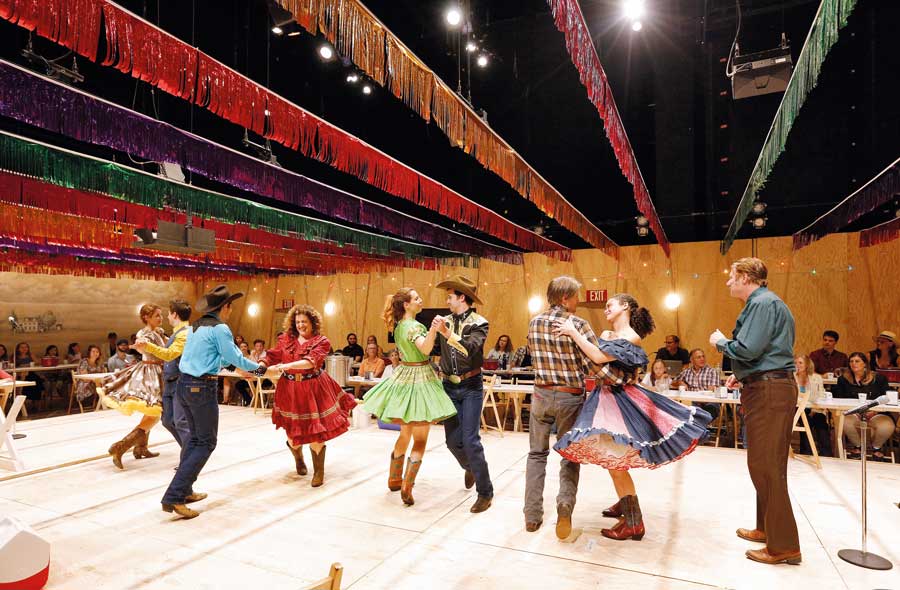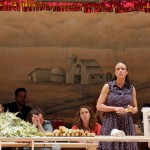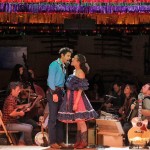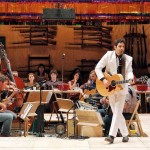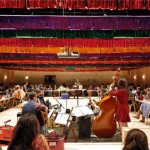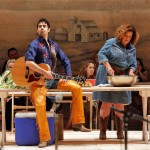Each month, American Theatre goes behind the scenes of the design process of one particular production, getting into the heads of the creative team.
Director Daniel Fish has felt a connection to Rodgers and Hammerstein’s Oklahoma! since he saw an amateur production at age 5. For his production at the Fisher Center at Bard College, Fish decided to get the audience as close to the action as possible, staging the romance of Curly and Laurey in the round with a cast of 10, and serving chili and cornbread to the audience.
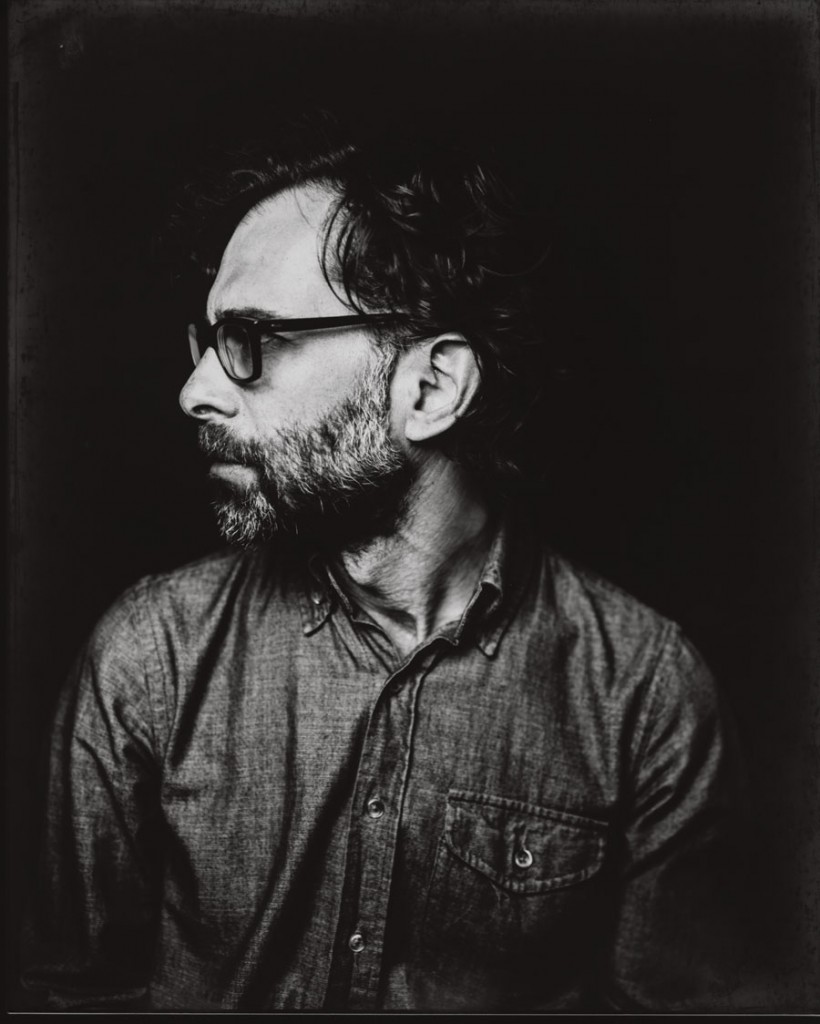
Daniel Fish, DIRECTION: I was interested in the similarities—the ways people come together over a meal and the way people come together in a performance; the way conversations happen over a meal and the way conversations happen through performance. And [set designer Laura Jellinek] and I were looking at these events, the community dinners in church halls, community centers, these kind of very American spaces, that weren’t necessarily traditionally dramatic spaces, although I think they’re all theatrically charged.
I just always had a feeling that [Oklahoma!] should all happen in one room, that we should be there with the piece, in as unmediated a way as possible. And it should feel as acoustic and as close to our ears and our skins, our bones as possible. So the choices were practical in that sense, to put the audience very close to it.
Whenever I’m doing a play, I think of it as a new play. Even if I know it’s been done, we’re all doing it for the first time. And the first night is different from the second night. That’s when theatre happens, in the present moment. So for me, it wouldn’t feel right to kind of think about it any other way, whether that was Shakespeare, or Rodgers and Hammerstein, or a play by Branden Jacobs-Jenkins. It’s happening now and I’m really trying to, on a practical level, work from that place. It’s not a question of reinventing it. It always has to kind of be new.
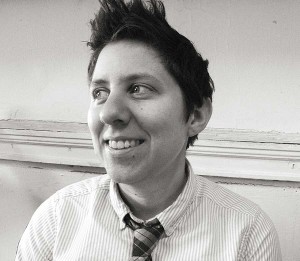
Laura Jellinek, SCENIC DESIGN: The point of the room was it’s a container—that you walk into Bard and you enter into this container where this event happens. So the way we got to the plywood walls is basically, what’s the simplest way to make a container? [Plywood is] what you would use, so it’s the truest version of the object.
So we said plywood walls and all the sort of plywood parts of it came out of that. We’re going to build these tables in the shop, so let’s just be honest, what would they use to build it? Plywood and 2×4. So we designed the tables based on that. The guns were partly Daniel’s idea, and guns obviously factor into the show itself—this idea of America and what it boils down to, and it was sort of like: There should be a lot of guns on the walls. So one of the walls is just covered with gun racks. The band onstage was an ongoing figuring-out. Originally they were just on the theatre floor but we wanted to make it so there was some separation and you could still see the actors, so we added a little deck for the actors to play on.
It’s pretty stripped down other than that. The props, we were really trying to be as truthful to the object of what would this be. We knew we needed a place for beer so we just got a normal cooler that you would get at Walmart.
Oklahoma!, by Richard Rodgers and Oscar Hammerstein II, ran June 25–July 19 at Richard B. Fisher Center for the Performing Arts at Bard College under the direction of Daniel Fish. The production featured new music arrangements by Daniel Kluger, choreography by John Heginbotham, music direction by Nathan Koci, scenic design by Laura Jellinek (based on an original concept by John Conklin), costume design by Terese Wadden, lighting design by Scott Zielinski, sound design by Drew Levy, and projection design by Joshua Thorson.

